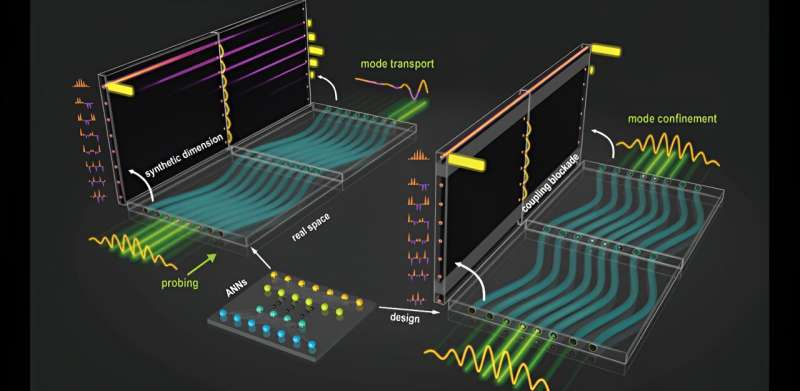In the realm of photonics and physics, the exploration of synthetic dimensions SDs has emerged as a frontier of research, offering a pathway to unlock phenomena beyond conventional three-dimensional space. Synthetic dimensions provide a unique platform to investigate complex physics, including topological effects and quantum phenomena, leading to groundbreaking advancements in various fields. Recently, an international team of researchers has made significant strides in manipulating light within synthetic modal dimensions, showcasing the potential for transformative applications in photonic devices and beyond.
Understanding Synthetic Dimensions: Synthetic dimensions represent an innovative approach to extend the exploration of physical phenomena beyond traditional spatial dimensions. By introducing additional degrees of freedom or parameters within a system, researchers can construct synthetic dimensions, enabling the study of exotic phenomena such as synthetic gauge fields, topological phase transitions, and quantum effects in higher-dimensional spaces. These theoretical frameworks offer unprecedented opportunities to delve into unexplored realms of physics and pave the way for novel applications in photonics and beyond.
Challenges and Solutions: One of the primary challenges in conventional three-dimensional space is the experimental realization of complex lattice structures with specific couplings. Synthetic dimensions provide a solution to this challenge by offering a more accessible platform for creating intricate networks of resonators with tailored couplings. The use of customizable arrays of waveguides allows for effective control of light within photonic systems without the need for additional complexities such as nonlinearity or non-Hermiticity.
Harnessing Artificial Intelligence: To achieve precise mode manipulation within photonic systems, researchers employ artificial neural networks ANNs to design waveguide arrays in real space. These ANNs are trained to create waveguide setups with desired mode patterns, facilitating the exploration of light propagation dynamics within synthetic dimensions. By modulating perturbations and frequencies, researchers can fine-tune waveguide setups to optimize the design and fabrication of integrated photonic devices.
Exploring Topological Control: The researchers demonstrate the versatility of synthetic dimensions by designing special photonic lattice structures, such as Su-Schrieffer-Heeger SSH lattices, which enable topological control of light propagation. Through precise manipulation of waveguide distances and frequencies, they showcase the ability to change the bulk mode in which light travels, highlighting the unique properties of synthetic dimensions in photonics.
Implications and Future Directions: The advancement in manipulating light within synthetic dimensions holds significant implications for various fields, including integrated photonics, quantum optics, and data transmission. By leveraging the interplay of topological photonics and synthetic dimension photonics empowered by artificial intelligence, researchers aim to unlock unprecedented materials and device applications. As we continue to explore the frontiers of physics and photonics, synthetic dimensions promise to revolutionize our understanding of light-matter interactions and pave the way for transformative technologies.
The research conducted by the international team underscores the transformative potential of synthetic dimensions in photonics and physics. By harnessing artificial intelligence and innovative design approaches, researchers have unlocked new avenues for controlling and manipulating light within higher-dimensional spaces. As we delve deeper into the realm of synthetic dimensions, we stand poised to unravel new physics, develop novel photonic devices, and drive innovation across diverse scientific disciplines.
